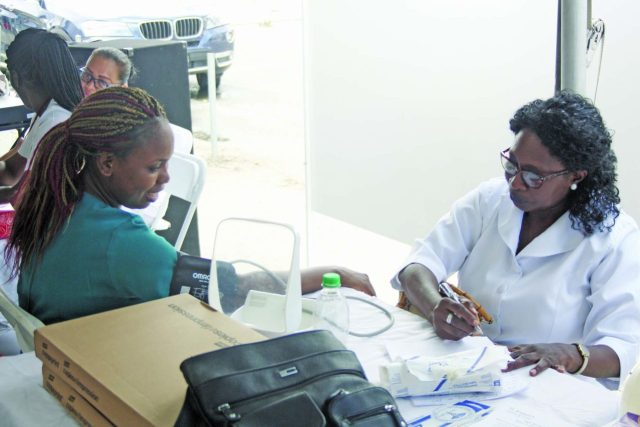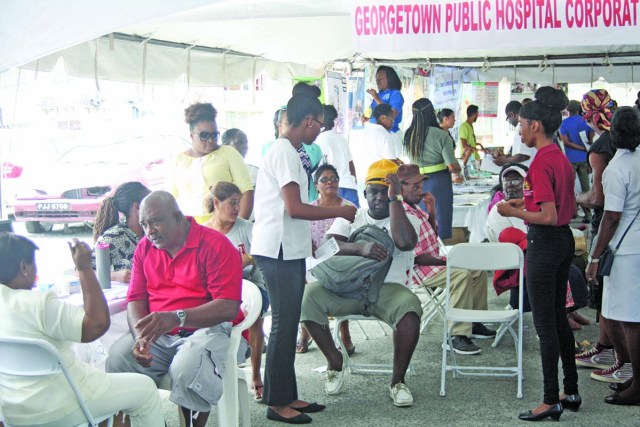
The Georgetown Public Hospital Corporation (GPHC) on Wednesday hosted a health fair which was open to the general public and saw many persons capitalising on services done free of cost by trained medical professionals.
The fair was organised in celebration of the institution’s 20th anniversary and featured several departments, private entities and organisations which focused on specialised treatments.
At the public health department, Nurse Nalini Dass-Sutton stated that employees of the hospital can also benefit from their line of services, which consisted of various vaccinations.
She stated that the yellow fever vaccine is extremely important to persons who are travelling to neighbouring countries such as Suriname and Brazil. As such, these efforts are geared towards immunising everyone and moreover, it is seen as a preventative measure to end the spread of these diseases.
“We are offering vaccination to the public as well as our colleagues and trying to immunise our population. We have the tetanus, MMR [Measles, Mumps and Rubella], Hepatitis B for the blood-borne diseases and the yellow fever vaccine,” said the nurse.
She added, “The yellow fever vaccine is very important to some persons who are travelling to some countries such as Brazil and Suriname. This is an opportunity for persons to be vaccinated”.
The principal services were offered at the optometry unit, as persons sought to have their eyesight tested. By the end of the first hour, some 50 persons were tested and referred to conduct additional tests.
An optometry intern at GPHC, Carla Cassiano, told Guyana Times, “We’re screening for refractive errors, diabetic retinopathy, glaucoma, cataract, among other eye diseases. We screen the patients and then we refer them to the eye clinic so that they can have further assessment”.
Meanwhile, the Guyana Diabetic Association was represented by some of its members, assisting persons with tests performed by the fundus camera and the HbA1c machine.
President of the Association, Glynis Beaton explained, “We have the fundus camera and will be testing the retina of over 2000 persons and also, the HbA1c machine to test the last three months of your blood sugar”.
On the other hand, the Paediatric Department introduced a number of techniques to demonstrate the impact of poisoning in children.
Diane Singh, a doctor attached to the department, explained that there are many instances where children ingest substances that are left carelessly around the house. Sometimes, it is in the form of medications which look like edible candy.
“We chose to focus on a few key areas that we’d experience regularly with our patients and parents. We’re focused on safety in the home for kids and mainly, poisoning. Candies look so much similar to medication and it is easy for children to mix them up,” Singh related.
A station was set up to teach parents how to store dangerous substances and medications away from young children. In many scenarios, these persons could not tell the difference between the two elements when compared.
They were also taught how to use a thermometer, since it was found that guardians could not clearly tell when their children have a fever.

Discover more from Guyana Times
Subscribe to get the latest posts sent to your email.













